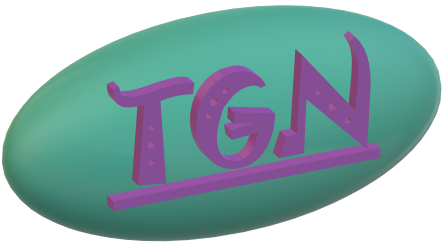How to Navigate the Professional Terrain (ladder)
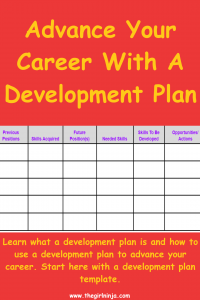
Navigating the professional terrain at work can be a maze for those just entering the workforce, or those who change career fields, or even for those who just change positions within their field of expertise. Most of us enter the workforce not knowing that we are responsible for navigating anything other than our day to day responsibilities. For some, you have family members or close friends that help you recognize the need for you to drive your own career, and help teach you how to drive your career.
For myself, I was a first generation college graduate. Most of my close friends were also first generation college graduates. I found myself and most friends that identified as first generation college graduates experienced challenges being in the “know” at work. Most first generation college graduates are hard working, and believe that working hard will pay-off. I know I thought hard work was enough. Show up, and give it my all, that was my day to day motto. I quickly learned that although hard work pays, first generation college graduates often find themselves working 50+ hours a week while watching colleagues work less advance much faster than them.
As I spent more and more time in my career it came to my attention that navigating the professional terrain is not a challenge that only 1st generation college graduates have to overcome. Depending on your career field the challenge to own your career and successfully navigate the professional terrain can be a challenge for many individuals. Sometimes it is gender, or our personality, or even our age that can prevent us from being able to clearly navigate the professional terrain.
This is very frustrating to watch and experience, so the question is, what can we do about it?
How to Own Your Career

Well, most start by turning to family members they think might know. Family typically has the best advice, specifically since they know you so well. I found that even with close family friends who had college degrees though, their advice was no match for the corporate career I had chosen. So how do we navigate an unknown space without any experience and without a confidant to guide us?
There are many tools you can use, but I think the secret to success is open communication. Your expectation and your management’s expectations openly communicated and aligned. To help us have effective communication there are several tools we can use.
Here are three steps you can take to strategically advance your career development, position, and/or pay at work, as well as successfully navigate the professional terrain.

1. Drive Your Own Career Development/Advancement
Below you can find a detailed description of how to do step 1, Drive Your Own Career Development and/or Advancement with a Development Plan Template. In the coming months I will also release individual posts with detailed descriptions of how to manage steps 2 and 3 about Mentorship, Sponsorship, and How To Showcase Your Own Work.
Before I jump into the Development Plan Template you are probably asking where I get my information from since I shared that I am a first generation college graduate and struggled with navigating the professional terrain. So, here’s what I have to offer you. I have been in the corporate world for 9 years, and in those 9 years I have advanced through 5 levels and more than tripled my salary. I have not done that blindly, I stumbled through it at the beginning letting my hard work and ability to build relationships with others drive my advancement.
In the past 5 years though, I focused on what resources I can use to advance myself and my career. Through my focus on resources I attended 3 professional development conferences and participated as well as hosted multiple career development workshops and discussions. This past experience of building a toolbox of resources to utilize in my career development is what I am sharing with you as well as my other posts around career development.
Now, on to your career development.
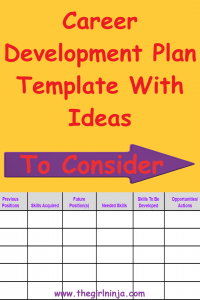
OWN IT
Waiting for someone else to offer you a development opportunity or promote you is one of the biggest career stallers there are. No one else is going to care about your career development or advancement as much as you do. Whatever effort you personally put into development and advancement will determine what you get.
Before we get any further let’s be certain we are on the same page, you might be asking what is the difference between your career development and career advancement. Let’s align on descriptions of development and advancement to ensure you are maximizing the value you get from this. Development is expanding your knowledge, skills, and expertise whereas advancement is a change in position that typically includes an increase in responsibility and pay. Please note that at most places of work development and advancement go hand in hand for obvious reasons, but in general the meaning of development and advancement can vary between individuals and will vary between positions.
Now let’s get down to work. To own either your career development or advancement means that you are making plans and requests for your own development and own advancement. Here are step by step instructions to own your development.
Development Plan Template
To start your development plan you ask yourself a series of questions and answer them. Below is the Development Plan template that I made and use for myself, it’s a table that I fill in to organize and lay out the plan. Below the development plan template table you can find descriptions how many items you should list in the different columns along with a description of each column.
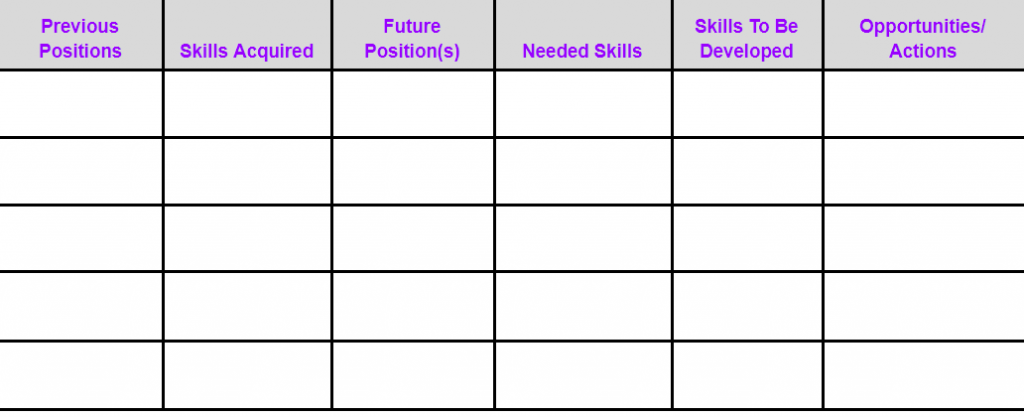
I suggest a number of items to list for each column in your development plan template. Know that the suggested numbers are just that, suggestions. You should select a number of items for each step that makes sense for your personal development plan, and they can be more or less than the suggested number of items for each step.
Previous Positions
List your past 3-5 previous positions
Skills Acquired
List 3-10 skills you acquired from each previous position you listed

Future Position(s)
List 1-3 positions you think you will want to be in, in the future.
This one should be tailored to you. If you are someone who knows what they want in 10 years then, put that. If you aren’t sure what you want in 10 years then try something smaller like your next role or even a role you want to be in, in 5 years.
Needed Skills
List 3-10 skills you need for the future position(s) that you listed
Skills To Be Developed
Compare your list of acquired skills to your list of needed skills and identify the skills that you have yet to develop that will prepare you for your future desired position.
Opportunities/Actions
Identify specific opportunities or actions that you can do to showcase your development of the skills you listed in skills to be developed.
More On Opportunities/Actions
Once you have answers to fill in the first 5 columns of your development plan template the next step is to fill in that last column that will list out actions that you will take to own your development. There are many actions you can take to own your development, below I list some options to help you think about what you can do.
Find a training or shadow experience that can fulfill a development need you identified in step 1.
After identifying a training or experience you need, ask your employer, usually your manager, how they can support you completing the experience. The support you need might include asking for the time to get this experience or time and money to register for the training. (Please note this is not a discussion you abruptly bring-up, but should be a meeting request to discuss your development.)
Identify network connections you can establish or strengthen to fulfil a development need you identified in step 1.
Making network connections typically fulfill development needs around learning more about the business. The purpose behind learning more about the business is usually so you can better understand the complexity of the business and the breadth of expertise that your business needs to be successful.
After identifying individuals to connect with for development purposes ask a connection you already have to connect you with them (introduce you) or send them a request for lunch or coffee. In your meeting request explain you are working on your own development and are interested in hearing about their experiences to expand your knowledge of the business or better understand your future path. Some individuals get nervous about reaching out like this, but know, no one has ever shied away from one on one discussions focused on their experiences, everyone I’ve met has loved opportunities to talk about themselves.
Record and track the steps you have taken for your own development. These are actions you should be proud of and will showcase your initiative when shared with others in the appropriate place and time.
Career Advancement
Now that you have learned how to own your career development let’s discuss how to own your career advancement. Below are step by step instructions to own your career advancement. You can find a more visual set of instructions in the template for career advancement.
Step 1: To plan for your own career advancement create your career roadmap.
Your roadmap should start with your professional training (college), list all relevant positions you’ve had since your professional training, list positions you plan to take to get to your desired position (last position listed on your roadmap).
Step 2: Provide actionable steps you need to take to obtain positions you do not yet have.
This step for career advancement can come from the development plan template you filled out. This is the connection between your plan and advancement. The career advancement plan you make, and steps you decide you will take to get to your desired position should be shared and aligned with leaders within your development circle. Leaders in your development circle might only be your manager, it can also be your manager and mentor(s) as well as your manager’s manager. The more individuals that know of your development plan and provide you feedback on it as well as align with you that it is an achievable development plan the more likely your development plan and advancement plan will be successful.
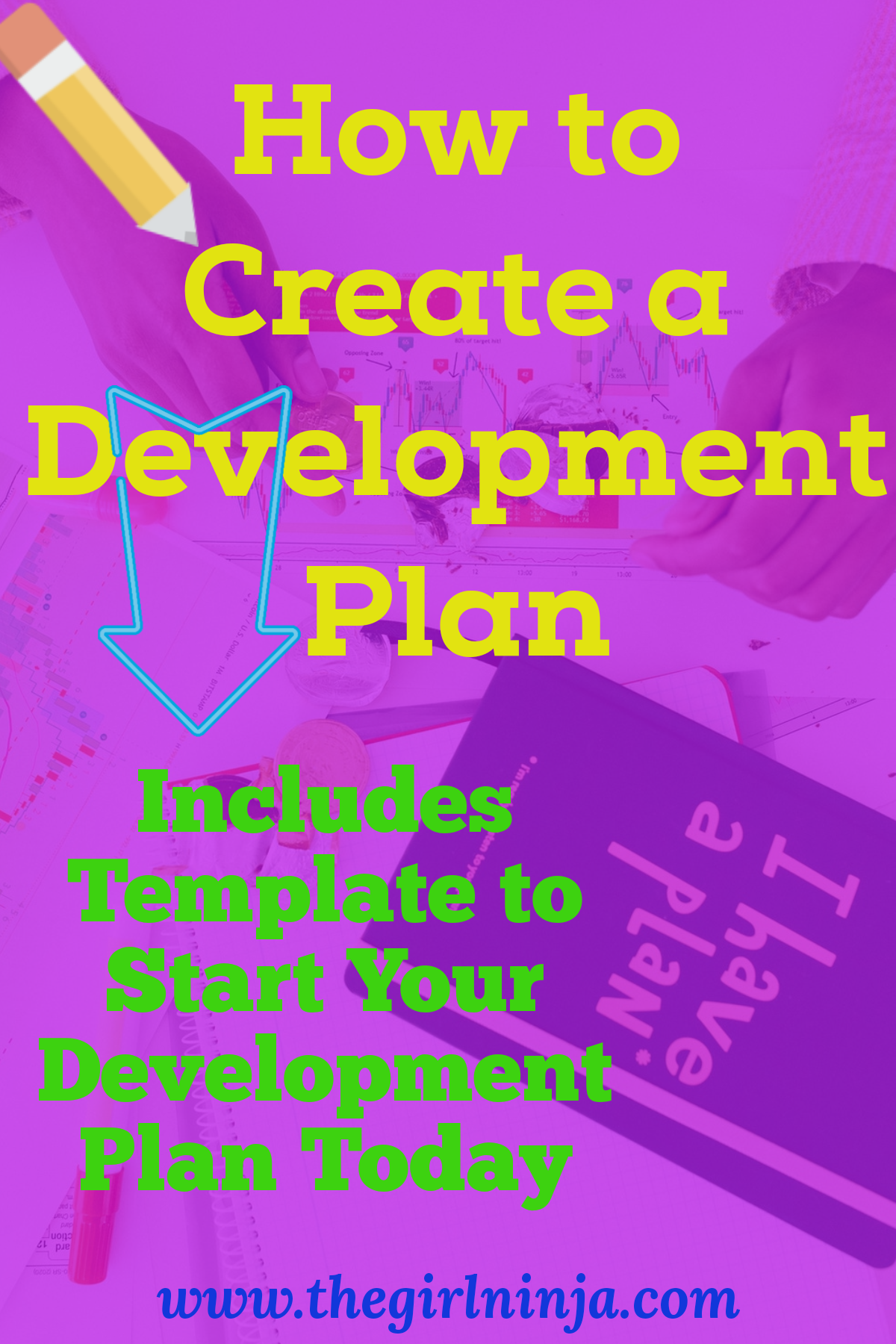
To better understand your development circle let’s elaborate on a development circle’s purpose.
We’ll start with a simple metaphor. Most people have heard, “if a tree falls in a forest and no one is around to hear it, does it make a sound?” The same applies to your career advancement, if you take steps to advance, but no one knows of the steps or their purpose, then do you advance? The most likely answer is no, you will need to share and ensure your leaders are aligned with your steps, and showcase the actions you take to advance. Help those who will be advancing your career understand your career flow by asking for their feedback about your plan. It is also very appropriate to ask for their support in helping you achieve the next step. Obviously most career advancement requires another level of independence so be careful that you are not asking for so much help that you are not coming off as independent. On the other hand you also do not want to let yourself sit at the same step because you’re not sure what to do or how to showcase it.
As you try to drive your own career development be sure to ask others how they did it. Particularly finding others in your industry that have advanced positions you hope to have someday, and asking what steps they took to get there can be very insightful. It’s also important to ask for feedback and be ready to grow from feedback that you receive. Comment below to share how your journey is going.
For more details on how to advance your career check out this following posts
Career Risks; What are Risks and How To Determine If You Should Take A Career Risk
What is and How to Get A Mentor & Sponsor
Coming soon
How to Showcase Your Work to Get Recognized

